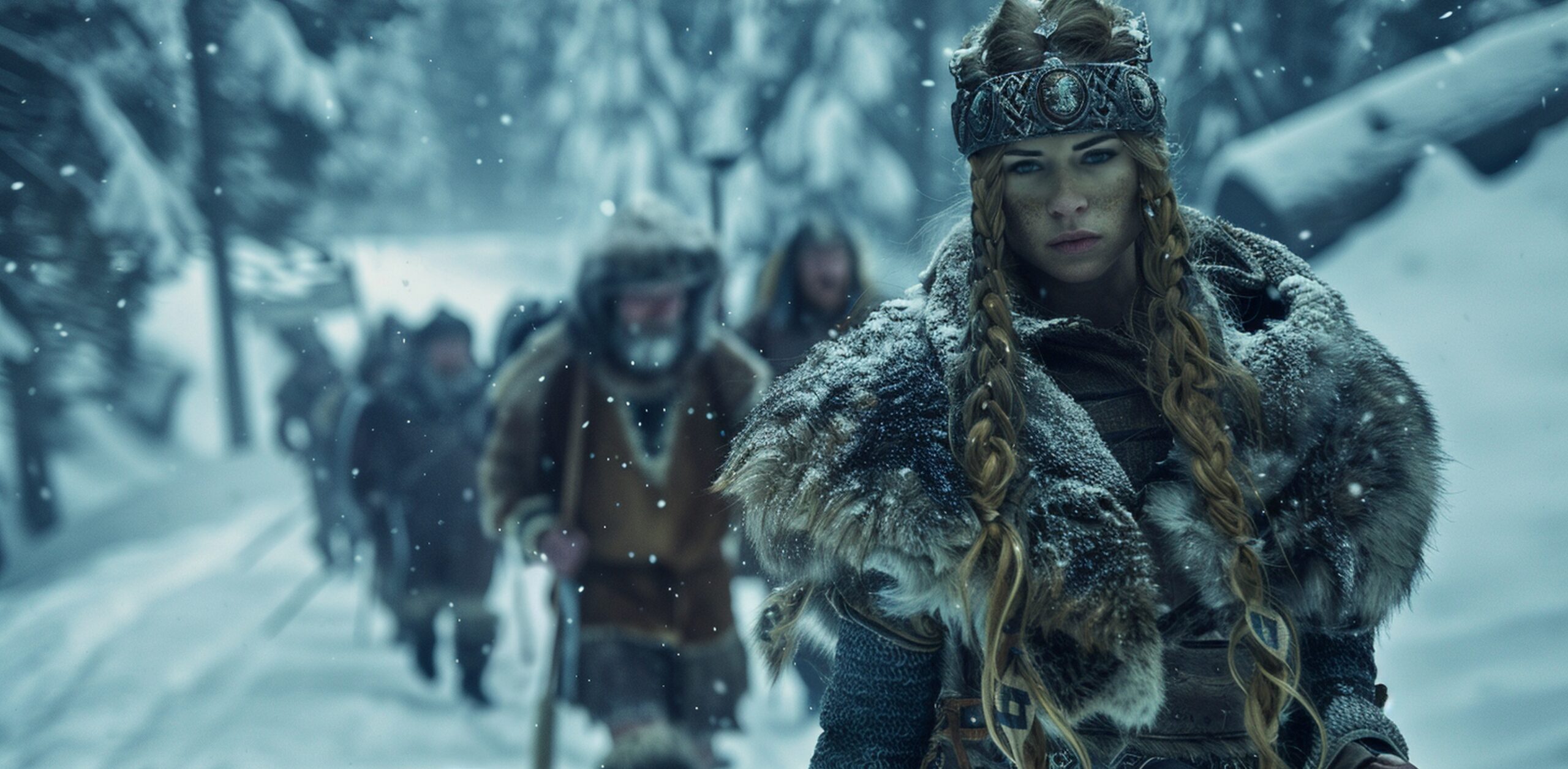
In the boundless tapestry of fantasy lore, few names evoke as much intrigue and admiration as Vaelianne Frostmere. Shrouded in an aura of mysticism, discipline, and icy command, she is often described as a powerful sorceress, a vigilant warrior, or even a lost queen of the frozen realms—depending on which legend you choose to follow. Her name whispers through ancient libraries, inscribed in snow-bitten ruins and etched into the memories of those who dared to cross her path. Whether real or myth, Vaelianne has become a symbol of both elegance and fury, embodying winter’s beauty and its merciless wrath.
Table of Contents
ToggleOrigins Cloaked in Snow
Vaelianne Frostmere’s origin is as elusive as a snowflake’s pattern. In many accounts, she hails from the Glaciaris Reach, a desolate northern territory wrapped in eternal winter. Said to be born under a full moon during the longest night of the year, Vaelianne was marked from birth by the ancient spirit of ice. Her eyes—crystalline and piercing—were described as harboring the chill of forgotten storms. Her people believed she was destined to be more than a mortal; she was to become a conduit of winter itself.
Some scholars argue that she belonged to a forgotten lineage known as the Frostmere Clan, a family of ice mages who once served as the guardians of the North. Others believe she was abandoned as a child and raised by frostwolves, her magic developing through instinct and survival. Regardless of the tale, all agree that she possessed a preternatural control over cold—able to summon blizzards, craft armor from ice, and slow the beating hearts of enemies with a mere glance.
A Sovereign Without a Throne
Vaelianne’s rise to power is often linked to a fractured kingdom known only as Nerevyn, a land that once lay under a thick canopy of permafrost. After the assassination of its last monarch, the region descended into chaos. It was during this time that Vaelianne emerged—not as a claimant to the throne, but as a force of balance. She quelled barbarian invasions with unrelenting ice storms, sealed mountain passes to starve out warring factions, and brought peace to scattered northern tribes through sheer dominance.
Despite her capability to seize power outright, Vaelianne refused to crown herself queen. She chose instead to serve as a steward of the wild and a protector of those forgotten by politics. This decision baffled nobles and inspired poets alike, who saw in her both the majesty of royalty and the humility of a true guardian.
Magic and Mastery
Vaelianne’s mastery of elemental ice was not merely a tool of destruction—it was an art. She did not rely on brute force alone but wielded her powers with grace and calculation. Her staff, carved from the heart of an ancient glacier, was rumored to be bonded to her soul, amplifying her control over temperature and crystalline matter.
She was known to sculpt intricate ice formations that sang when the wind passed through them and to craft silent golems who patrolled her remote sanctuaries. Some claim she could freeze time for a brief moment, encasing reality in a thin veil of frost. Others swear that she spoke the language of snowflakes, understanding their formation and motion as a musician reads notes.
Despite her formidable prowess, Vaelianne adhered to strict discipline. She meditated in snowfields until buried completely by snowfall, trained her senses in complete darkness, and often walked barefoot through blizzards to test her limits. Her commitment to mastering her art inspired both awe and fear.
Friend or Foe?
Vaelianne Frostmere has always existed in moral ambiguity. To those she saved, she was a guardian angel sculpted in ice. To those she opposed, she was a glacial demon with no heart. Her enemies often perished not by her hand but by the consequences of their own greed or violence. She offered warnings before retaliation, and when she did act, her justice was swift and irreversible.
Legends tell of a southern warlord who attempted to enslave the northern tribes. Vaelianne, upon learning of his cruelty, summoned an unrelenting blizzard that buried his entire army beneath twenty feet of snow. She then etched a sigil into a monolith beside the battlefield that read, “Winter remembers.”
Though feared by some, she earned respect from mages, scholars, and warriors across the continents. Many sought her mentorship, though only a handful were deemed worthy. Her pupils were taught not only magic but the ethics of power, the importance of silence, and the strength in restraint.
The Disappearance
At the height of her legend, Vaelianne Frostmere vanished.
There are no definitive records of her death. Some say she wandered into the Eternal Glacier—a shifting land of blizzards and riddles—where she sought communion with the Ice Spirit, never to return. Others believe she was betrayed by a trusted student, frozen in a moment of vulnerability. There’s even a more romantic tale that she dissolved into snowflakes, choosing to become part of the world she protected.
Whatever the truth, her absence was felt across the northern territories. Tribes fought again, roads to the North froze over, and her name became a quiet prayer among children seeking protection from the cold.
Legacy Written in Ice
Though gone, Vaelianne Frostmere’s legacy persists.
Ice sculptors claim her techniques still guide their hands. Winter mages study her principles and replicate her spells. Explorers in the north sometimes find crystalline totems believed to be her last gifts—structures that emit warmth and shelter to those lost in the cold.
Poets often describe her as the embodiment of contradiction: gentle yet terrifying, cold yet compassionate, solitary yet fiercely loyal. To them, she is not merely a sorceress or a warrior—but a symbol of nature’s indifference and balance.
In modern adaptations, she has become a character in folklore, novels, games, and song. Some portray her as a tragic antihero, others as a goddess in mortal form. Yet all versions agree on one thing—Vaelianne Frostmere was unlike any other. She was the calm before the storm and the storm itself.
Conclusion
Vaelianne Frostmere stands as a hauntingly beautiful myth, a story forged in frost and preserved by time. Whether she was truly a powerful mage, a reclusive protector, or a clever fabrication of generations longing for meaning in chaos, she represents something primal and powerful: resilience in the face of cold, balance in power, and the silent strength of solitude.
Her story endures, not because it is loud or exaggerated, but because it resonates with those who see nobility in silence and power in patience. Like frost creeping across a windowpane, her legacy is subtle but unyielding—etched permanently into the lore of all who seek truth in legend.
About the Author
admin
Administrator
Welcome to our guest post platform — your destination for insightful, high-quality content from contributors around the world. I'm Qasim Malik, the admin behind this initiative, committed to building a diverse space where voices from various industries, interests, and backgrounds come together. Our mission is simple: to empower writers, bloggers, and thought leaders by giving them a platform to share their expertise, opinions, and stories. Whether you're a seasoned expert or a passionate beginner, our site welcomes you to publish and connect with a wider audience.





